OHA reported that we are seeing increasing spread of COVID-19 at social gatherings like graduations, birthdays, weddings and holidays. COVID-19 is also spreading more among social activities involving groups of younger people, with outbreaks linked to exercise classes, a fraternity party and a bachelor party, among other gatherings.
While it is difficult not to celebrate these events as we have in the past, COVID-19 is spreading in our communities and people must think hard about altering daily routines that may put people at risk.
We know these conversations aren’t easy. It can feel like your judging other people’s decisions or like you’re overreacting. But COVID-19 is serious, and these precautions can make a difference. We wanted to give you some tools for talking to friends and family about getting together, offering alternatives and discussing your boundaries.
In the meantime, we recommend that everyone:
- Limit the size of gatherings.
- Keep our distance.
- Cover our faces.
- Find alternative ways for those who are vulnerable to participate.
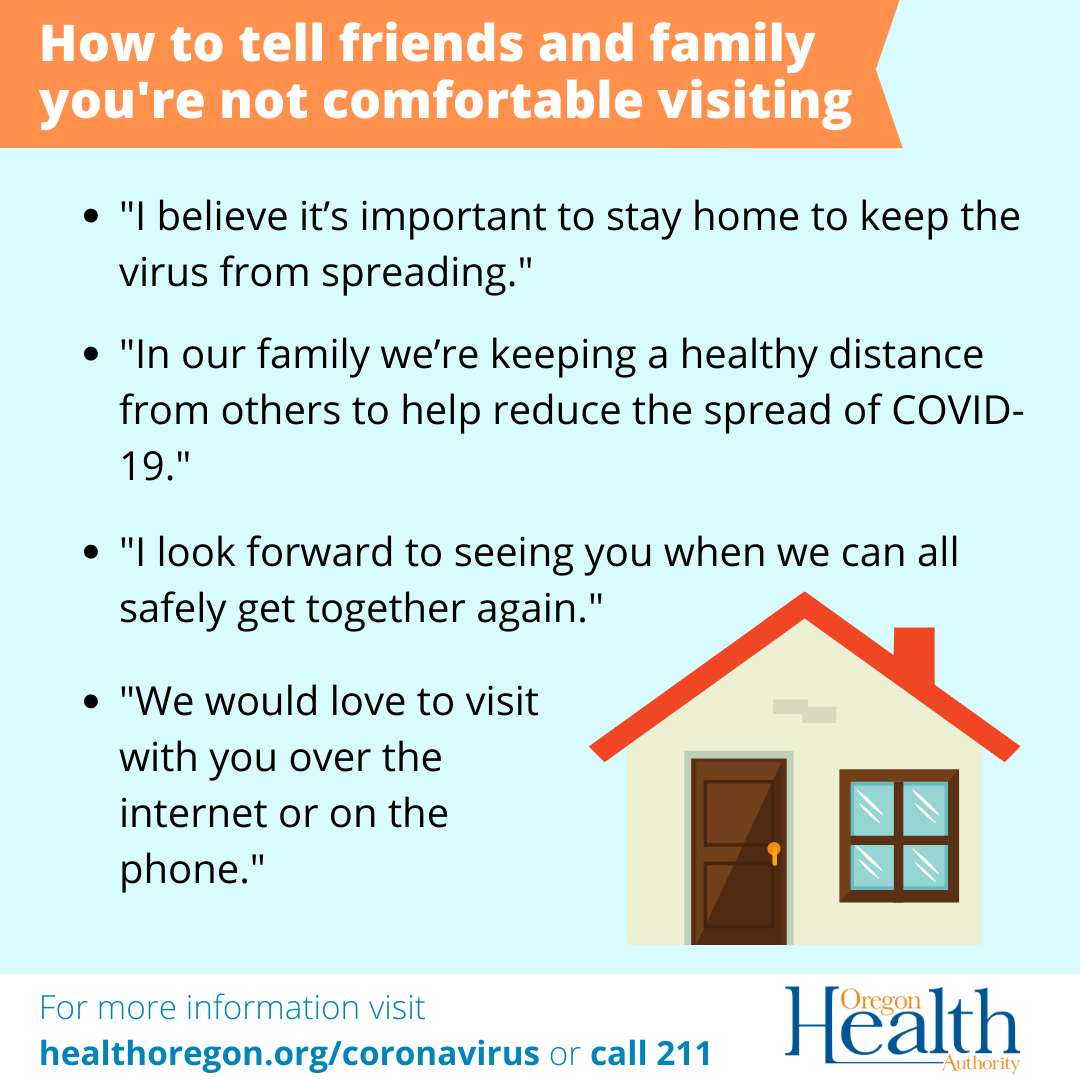
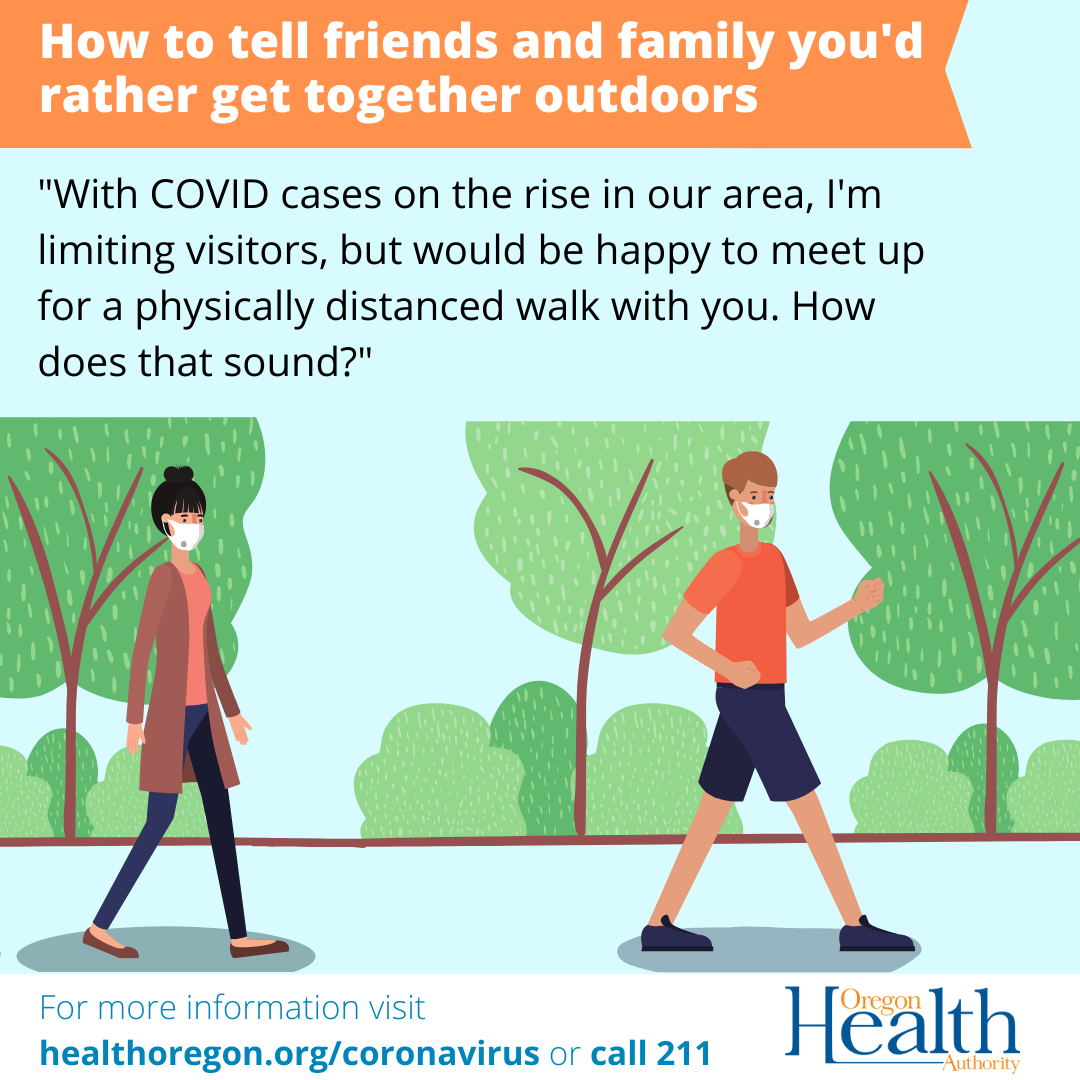
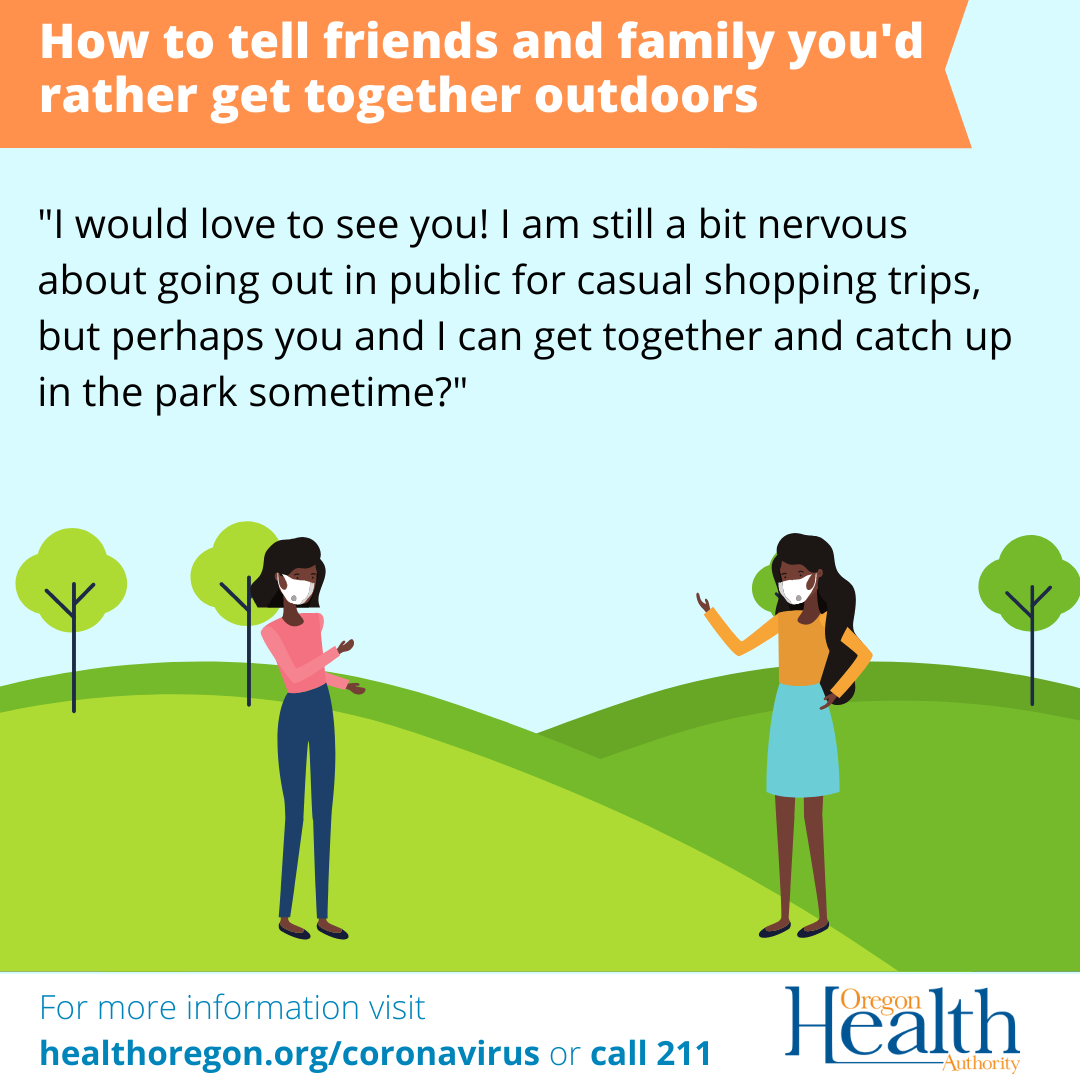
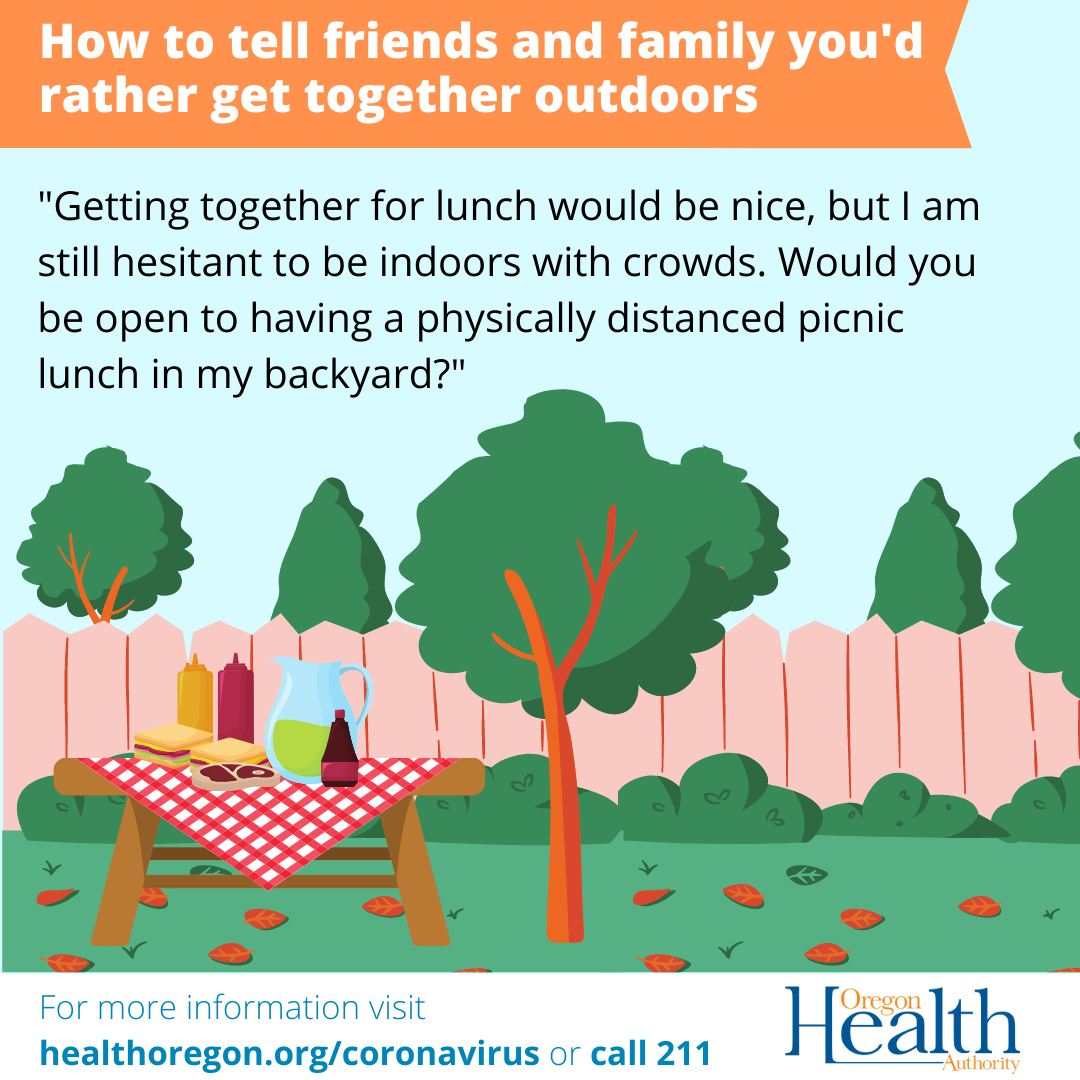
Modeling shows potentially steep upward trend
The newest modeling shows the continuation of a concerning trend of rapidly spreading COVID-19 throughout Oregon. Cases are rising fast, and even a 10-percent reduction in the growth of infection would result in significant increases in new cases day after day.
The bottom line is that the disease is spreading more rapidly than expected and that since reopening, Oregonians have not consistently practiced the behavior needed to contain the spread of COVID-19.
Three modeling scenarios all show rising cases.
The first scenario assumes transmission rates stay the same as they are now, with daily infections tripling over the next month and a similar increase in COVID-19 hospitalizations over the next 30 days.
The second scenario assumes a 10-percentage point decrease over the 30 days, slowing the growth of infection and cutting hospitalizations in half.
The third and final scenario assumes a 10-percentage point increase continuing over the next 30 days with a dramatic increase in daily cases and a sharp increase in hospitalizations.
In any scenario Oregonians must do more to flatten the curve of COVID-19 by taking the recommendations of health authorities. Limit the size of gatherings; maintain 6 feet of physical distance between people; wear a face mask; practice good hand hygiene and stay home if you are sick.
Telehealth agreement for health insurance plans
The State of Oregon has reached an agreement with several health insurance companies to continue providing expanded telehealth options through at least Dec. 31, 2020.
The agreement follows guidance issued by the Department of Consumer and Business Services and the Oregon Health Authority in late March requiring health insurance plans of all types to provide coverage for multiple telehealth platforms at the same rate as an in-person visit to limit in-person health care services.
In addition to these companies, the Oregon Health Plan continues to offer pay parity and other allowances for many telehealth services, offering the same rate as an in-person visit for physical health services, behavioral health services, and some dental and long-term care services.
Visit the Division of Financial Regulation’s Telehealth page for frequently asked questions and more information.
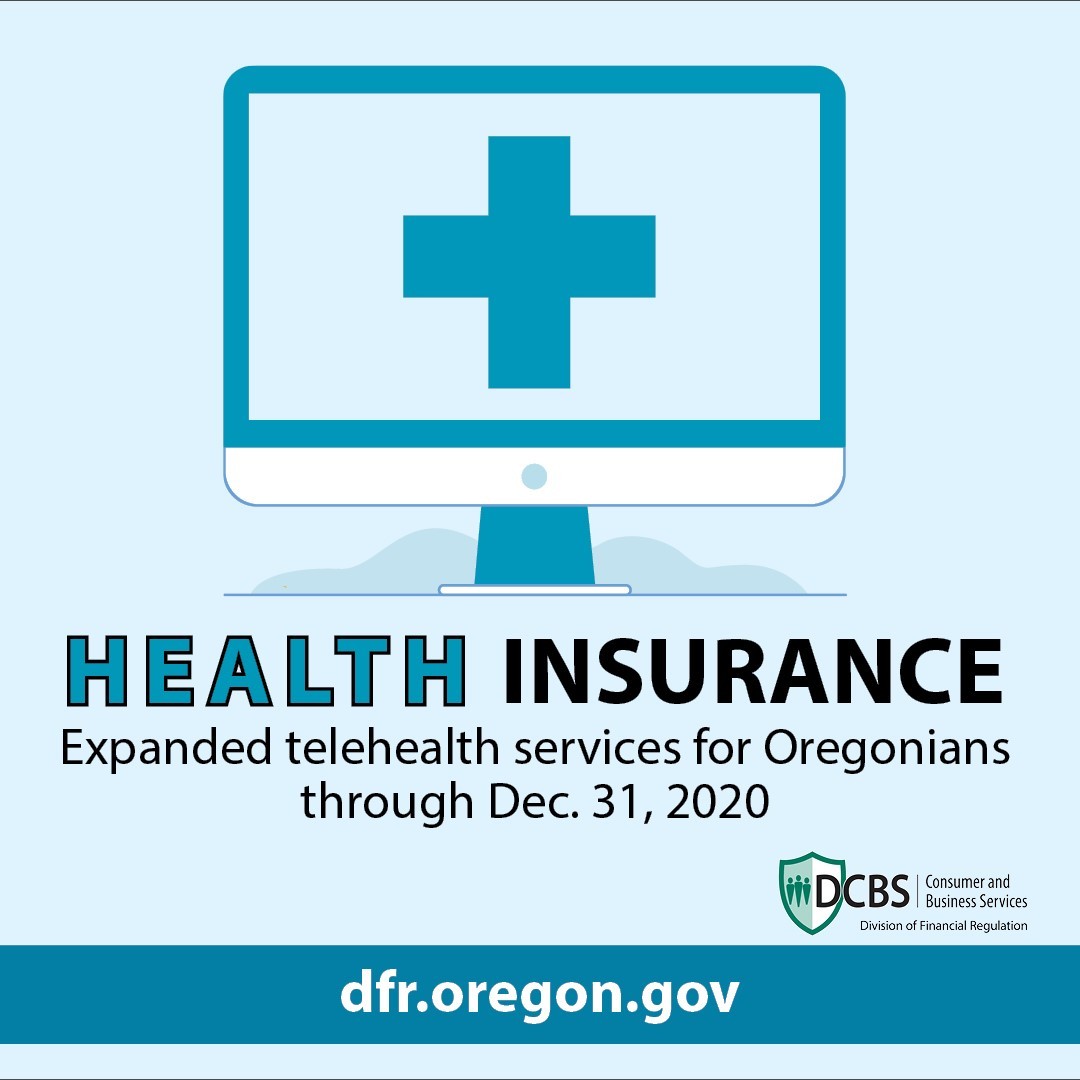
Oregon reports 275 new confirmed and presumptive COVID-19 cases, 2 new deaths
COVID-19 has claimed two more lives in Oregon, raising the state’s death toll to 232, OHA reported Friday July 10th.
OHA reported 275 new confirmed and presumptive cases of COVID-19 Friday July 10th, bringing the state total to 11,454.
The new cases reported July 10th are in the following counties: Baker (1), Benton (6), Clackamas (11), Crook (1), Deschutes (8), Douglas (2), Hood River (4), Jackson (9), Jefferson (15), Josephine (2), Lane (10), Linn (3), Malheur (21), Marion (28), Morrow (3), Multnomah (37), Polk (3), Tillamook (1), Umatilla (51), Union (1), Wallowa (1), Wasco (5), Washington (44), Yamhill (8).

